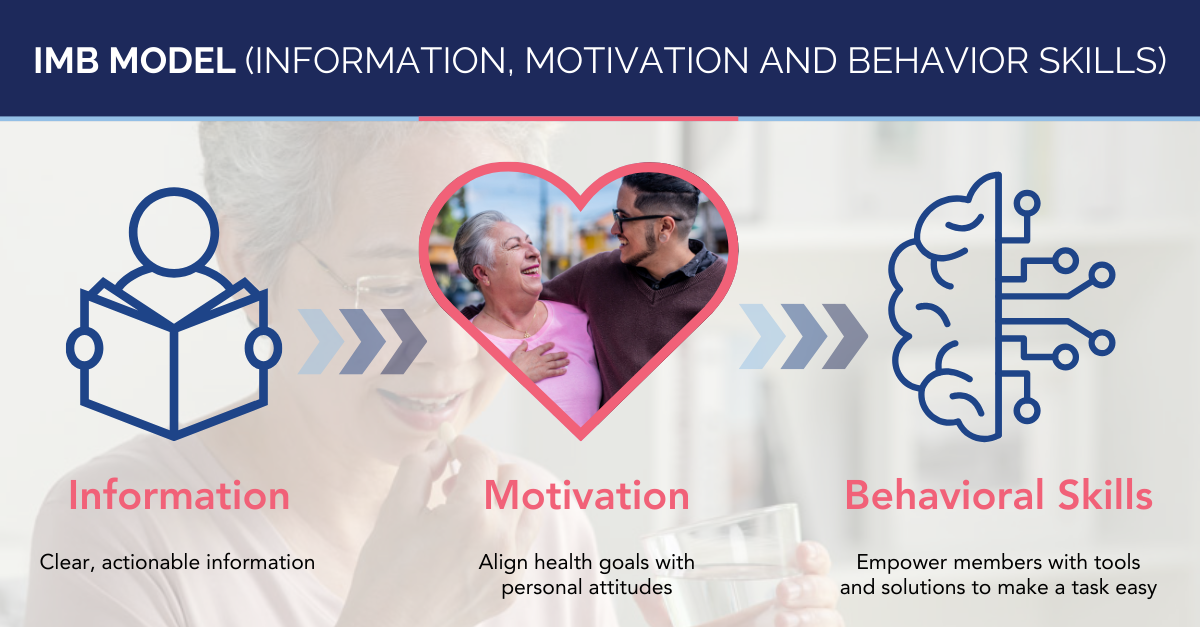Published on .
Member Engagement Drives Star Ratings Success—and Behavioral Science Holds the Key
2025: The year Medicare Advantage Plans need to innovate (or fall behind)
The Medicare Advantage landscape is on the verge of a pivotal challenge. Over the past year, the market has been rocked by dramatically lower performance on the Star Ratings system, putting many plans into a hole that will be hard to dig out of during the next performance period. But here’s the thing: success is not just about offering great benefits—it’s about getting members to actively engage with those benefits in meaningful ways. Without effective engagement, even the best services remain underutilized, and plans fall short of the goals that drive Star Ratings.
As pressures mount from regulators in the form of continually harder cut points and from consumers to provide accessible, equitable and affordable services, as well as pressures from a new administration’s plans for the marketplace and under-reported contract terminations, the future success of MA PD plans hinges on one thing: member engagement. How can you connect with “unengageable,” high-risk, high-need members—the last mile in your plan’s success?
The answer lies in creating a tailored, omnichannel engagement strategy, powered by behavioral science and smart analytics that meet members where they are in their personal health journeys.
Why intentional omnichannel engagement is critical to member success
Omnichannel (or multichannel or multimodal) engagement means connecting with members through a mix of methods—be it text messages, emails, phone calls or physical mail—using their preferred communication channels. But it’s not just about throwing out more messages; it’s about being smart and intentional with those touchpoints to effectively engage and drive member behavior change.
Why does this matter? Behavioral science tells us that people often need multiple, targeted interactions before they take action. This is the core of the “Rule of Seven,” a marketing principle that suggests a consumer needs an average of seven interactions with a brand, product or message before those touch points drive action. In other words, the more ways you reach your members, the more likely they are to respond. But there’s a caveat: members should never feel overwhelmed. Bombarding them with messages they don’t find useful or relevant will backfire.
So, how do we avoid the “spam effect”? It’s about precision—knowing the right moment, the right channel and the right barrier to overcome in order to move the member in a positive direction. This is where the combination of behavioral science and smart analytics comes in.
Read more about solutions to reach and engage your “unengageable” plan members in our white paper.
Applying behavioral science to omnichannel outreach
Behavioral science is the study of how and why humans act the way they do, with the goal of being able to better understand, predict and modify people’s behaviors in a desired direction. When it comes to member outreach, engagement and communications, behavioral science can help MA PD plans design interactions that move members towards positive action.
One useful framework for driving member engagement and action is the IMB Model (Information, Motivation and Behavior Skills) of behavior change. Here are examples of how it works:
- Information: give members clear, simple, actionable information (e.g., if someone’s due for a cancer screening, make sure they know why it matters to their health—in their language, in a way that resonates emotionally and logically, and through their preferred communication channel.)
- Motivation: tap into what truly motivates members. Align health goals with a member’s personal attitudes, values and social support (e.g., if you’re encouraging an elderly member to schedule an annual wellness visit [AWV], frame it around their desire to remain active and healthy for their family, not just as a checklist item.)
- Behavioral skills: empower members by providing tools, skills and solutions to make a task easy. Whether it’s setting up mail-order pharmacy delivery for someone struggling with medication adherence or suggesting community resources for members experiencing food insecurity, your engagement efforts should make the path to action feasible and effortless.
Four steps to infuse behavioral science into engagement strategies
So, how do we apply these principles to real-world outreach? Below are four practical steps for optimizing omnichannel member engagement.
1. Personalize with behavioral insights
Behavioral science shows that people respond better to communications tailored to their personal motivations and preferences. Collect data from multiple sources (e.g., member interactions, surveys or claims data) to understand why a member might act—or not act. Are they motivated by family? By health goals? By financial incentives?
Once you know their “why,” craft messaging that speaks directly to it.
Example: instead of a generic reminder for a preventive screening, highlight the long-term benefits of staying healthy for their loved ones, or emphasize what they stand to lose if they miss their screening.
2. Optimize communication channels
Behavioral science tells us that people’s abilities to engage with technology aren’t determined by their age, but by their familiarity and comfort with the medium. Don’t assume: ask.
- Use data insights to determine communication preferences. For instance, some members may prefer a text message over a phone call, or vice versa. Other members may respond better to visual prompts (like postcards or infographics), rather than detailed emails.
- Test different formats and measure responses. A/B testing can help identify what resonates with different audiences.
3. Set the right timing and frequency
Behavioral science teaches us the importance of timing. Engaging members at the right moment—after a diagnosis, after a hospital discharge or during critical health windows—can make all the difference.
Find the sweet spot for frequency. Over-communicating can lead to member burnout, while under-communicating risks leaving members disengaged. A well-paced content drip—reminders sent at the right time, in a rhythm that feels natural—can help keep members on track without overwhelming them.
4. Speak directly to your members
Today’s members expect personalized communication. Generic, one-size-fits-all messages no longer resonate. Members want to be seen, heard and understood. If your messages aren’t tailored to their unique needs, preferences and life situations, they’re less likely to engage and take action.
Behavioral science shows that personalized messaging has a greater impact. Whether you’re reminding a member about a screening or encouraging a wellness visit, it’s about making the message feel relevant to them.
Clear, accessible language, and culturally relevant language and images, further deepens that connection—making members feel seen and valued, not just as policy numbers.
Using technology to scale personalized outreach
While behavioral science offers the principles, technology provides the tools. Using smart analytics, dashboards and segmentation strategies, MA PD plans can analyze member data to automate personalized communications at scale, targeting specific groups based on their risk levels, engagement history and health behaviors.
The result? A more efficient, effective engagement strategy that maximizes the likelihood of positive health behaviors, drives better health outcomes and aligns with the plan’s high-priority Star Ratings objectives.
In summary
Creating an omnichannel strategy rooted in behavioral science isn’t just about delivering more messages. It’s about delivering the right message, at the right time, in the right way—making members feel supported, understood and empowered to take action.
With the right mix of personalized outreach, thoughtful timing and targeted messaging, MA PD plans can overcome both today’s and next year’s challenges, building stronger connections with members and ensuring improved health outcomes. And ultimately, that’s what drives the success of your Star Ratings.
AdhereHealth is here to help you implement evidence-based engagement that drive results. To learn more or schedule a consultation, reach out today!

Dr. Chandra Osborn
AdhereHealth Chief Behavioral Officer


